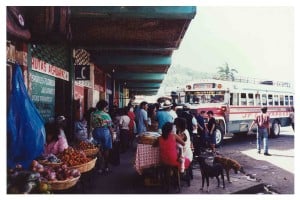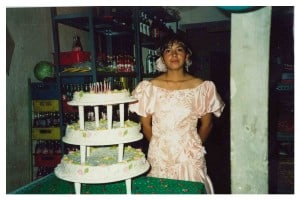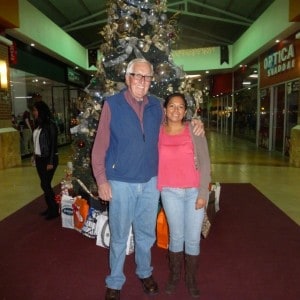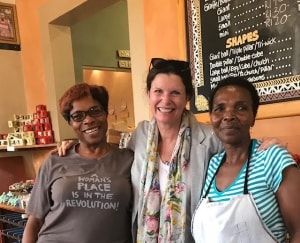One of the rewards of international volunteering is returning to a place where you once volunteered to visit old friends.
I am currently on a trip to Guatemala where I served as a Peace Corps Volunteer in 1991-1992. I spent some time over the past two days in Jutiapa, Jutiapa Guatemala the capital of the Jutiapa Department of the country and the town that I lived and served in while a Peace Corps Volunteer. The trip to Jutiapa in the east or “Oriente” of the country, is a rather complicated five or six hour trip by public transport from Antigua, Guatemala where I am staying. The trip began with a ride in a packed shuttle van to the Aurora International Airport in Guatemala City. Most of the passengers, much younger than I, were returning home from extended adventure trips to this beautiful and enchanting country. The chatter in the shuttle reflected both the joy of interesting trip discoveries and the excitement of returning home. My seat partner had spent three weeks in the country traveling with a friend. He told me they had spent the last days of their visit swimming and enjoying the spectacular turquoise pools at Semuc Champey. Located in a remote spot in the Southern Vera Paz region of the country, and the site of a natural bridge, Semuc Champey was not a popular tourist landing-place when I was a Peace Corps volunteer here. Times have changed. It is now a very popular destination. My seatmate, traveling from Germany, thought it was a perfect location to end one’s trip to Guatemala.

Upon our arrival at the airport all of the passengers but me got off of the shuttle to check-in for their flights. The driver and I went searching for the departure terminal for buses to Jutiapa, Jutiapa. Jutiapa is not a favorite destination of either estrajeros (foreigners) or Guatemalans – unless it is your home. Consequently not a lot of people know how to get there. In my Peace Corps days when Guatemalans asked me where I lived and I responded with “Jutiapa” they would invariably say, “¿Por que?! (Why?!).
After 45 minutes of clueless wandering through the congested and brassy streets of the capital city we finally found the unknown bus station in Zone 4. A frustrated shuttle driver dropped me off and I waited for thirty minutes or so for the” Pullman” to Jutiapa. Pullmans are old Greyhound type buses from the U.S. and other countries.

They are preferable to the colorfully decorated and cramped former U.S school buses-also known as “chicken buses”- that are the most common form of inter-city transportation in the country.
The two-and-a-half hour trip to the hot and dusty agricultural center begins with a climb out of the Valle de Ermita that holds the city called, by locals, “Guate”. The road winds through steep mountains on its way east and on a clear day it is possible to see the majestic and active Pacaya volcano from the bus. Memories came flowing back as we passed through the villages and towns pointing our way. Women selling food and drinks boarded the bus at various stops. They walked down the aisle with a basket of goods and shouted, “Agua, mani, empanadas de pollo (soft drinks, peanuts and chicken pie)!”
After a few miles, and a few sales, the women get off the bus and board another heading back to where they joined us. And so goes their day –filling the basket, boarding the bus, a few sales, disembarking a few miles down the road, boarding another bus back to where they started, a few sales, disembarking, refilling the basket and boarding another bus, on and on, Very long and difficult days and weeks making a few Quetzales (Guatemalan currency) to help support their families. Unknown heroines.
Upon my arrival at the manic Jutiapa bus terminal, I was met by a Lety, a young girl when I met her 20 years ago and who I hadn’t seen in 12 years. Now married, with an 11-year-old son, she invited me to stay with her family. We shared some delightful memories that evening over family dinner and then a walk in the dimly lit, grimy but vibrant town. She was 14 years old and very shy when we first met.

She also had a passion for learning English. I helped her some – gave her Dr. Suess and other English language books and worked with her reading and pronunciation. When she turned 15 she invited me to her quinceañera (15th birthday celebration) – an honor. It was a highlight of my Peace Corps experience.

On the day of my departure, friends of Lety accompanied me to the bus terminal to catch a Pullman back to Guatemala City where I could catch a taxi to Antigua. After I boarded the bus a woman vendor, basket full of food next to her shoulder, approached me and started rattling away in excited Spanish. She spoke about a photo she has of she and I that was taken 20 years ago. My head wasn’t ready for her chatter but I did pick up key words and thoughts. She mentioned someone’s name, a woman with whom I had worked during my Peace Corps days. She told me that she, the vendor, is now thirty-two years old and has a family of five children – she stated the name of each child – and also said her life had changed and she was now involved with the “iglesia” (church). She talked about her business selling food and was quite proud of her work. On she kept chattering and I kept wondering who she was? After she stepped off the bus, and just prior to our departure, she tapped on the open window of the fellow sitting behind me and handed him a note to give to me. On the note were her name and phone number. As the bus was leaving the station, and I saw the name on the note, a bell rang in my head. She was the little girl I had written about in “The Beggar” when I first returned home from Peace Corps. A circle had been closed. When last I heard about her she had supposedly left the country and followed in the footsteps of her dissolute mother. To find that she is in her hometown working and helping support her family brought hopeful closure to a story that I was afraid might have a dire ending.
An interesting and surprising ending to a delightful trip.
Saludos,
John Dwyer




